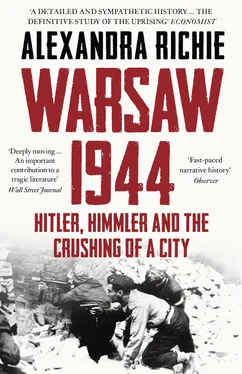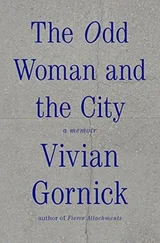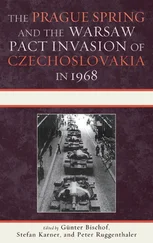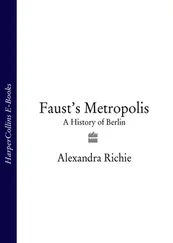Bach joined the SS in 1930, and quickly became friendly with powerful colleagues including Kurt Daluege, Adolf Eichmann and Reinhard Heydrich. On 7 November 1939 Himmler made him Commissioner for the Strengthening of Germandom in Silesia, where his duties included mass deportations of Poles to make room for ethnic Germans being resettled in the east. In order to deal with the large number of now homeless ethnic Poles in his area, he proposed to Himmler that a concentration camp be built for the non-German inhabitants of the region. Obergruppenführer Arpad Wigand proposed a place called Auschwitz, and the camp was duly created in May 1940, initially for Polish Catholic prisoners. Von dem Bach visited the camp’s commandant Rudolf Höss there shortly afterwards, dispensing advice on how many prisoners should be shot in reprisal for attempted escapes. After the war von dem Bach claimed that Auschwitz had been nothing more than a ‘troop training centre’ at the time; in reality he had been one of its creators, and was fully aware of what was done there.
After the invasion of the Soviet Union, Himmler made von dem Bach HSSPF – ‘Higher SS and Police Leader’ – in the region of Army Group Centre, which was pushing east through Byelorussia. It was an amazing elevation. Had the Germans conquered Moscow, as von dem Bach fully expected them to do, he would have reached the lofty heights of being HSSPF in the Russian capital itself. Vain, ambitious and anxious to keep in with Himmler, he embarked on an exhaustive series of journeys to execution sites throughout Central Europe in order to prove his worth. By August 1941 he had travelled from Minsk to Mogilev to Starobin – a total of nine sites at which mass killings took place. 11He travelled even more the following year, doggedly going to the ravines and pits and trenches in which the innocent were shot in cold blood; men, women and children. He competed with his fellow HSSPFs to ‘win’ the ‘killing score’ in his region: in 1941 he proudly wrote to Berlin that he had ‘passed the figure of 30,000 in my area’. On 28 July that year, after a meeting with Himmler, von dem Bach mounted an operation to comb the Pripyat marshes for ‘partisans’. Himmler’s oral instructions had left no doubt: ‘All Jews must be shot. Drive the females into the swamps.’ This Aktion lasted from 2 to 12 August, with 15,878 people killed and 830 prisoners captured. One of the most vicious and efficient officers in the Aktion was Himmler’s protégé and Bach’s friend Hermann Fegelein, who worked closely with von dem Bach throughout. His cavalry brigade were ruthless when it came to rounding up and shooting civilians: they reported killing 699 Red Army soldiers, 1,100 partisans and 14,178 Jews in one sweep alone. The women and children who did not drown in the shallow waters of the marshes were shot. At Nuremberg Bach claimed that he had ‘personally saved … 10,000 Jewish lives by telling them to hide in the Pripyat marshes’. The reality had been quite different.
Von dem Bach saw Himmler in Byelorussia on 15 August 1941. Film footage of this visit gives a hint of the power that Himmler must have felt in those heady, victorious days. He and von dem Bach were joined by Karl Wolff, chief of his personal staff, Otto Bradfisch, leader of Einsatzkommando 8 of Einsatzgruppe B, and Hermann Fegelein. Himmler, tanned and relaxed, processed through the streets of Minsk in an open Mercedes like a famous film star, every inch the conquering hero. On his arrival at the tall, white, modernist SS headquarters, with its enormous flag curling over the roof, he waved to the adoring employees who had lined up, cheering and smiling, on the balconies to greet their boss.
Von dem Bach took Himmler to a Soviet PoW camp on the outskirts of Minsk. Some of the emaciated prisoners tried to catch a glimpse of Himmler, while others lay on the ground, unable or unwilling to move. The Reichsführer SS started a conversation through the wire with a tall, handsome young man, but then, as if suddenly realizing that he was talking to a ‘sub-human’, turned quickly away, rubbing his nose with the back of his gloved hand.
The brutal treatment of Soviet PoWs is one of the least-known, and most terrible, crimes of the Second World War. Once captured, the prisoners were marched or forced to run to gathering points, or were transported in open freight wagons, 150 at a time; the wounded who could not keep up were shot immediately. ‘What do you do with 90,000 prisoners?’ asked one Wehrmacht soldier who filmed such a group. ‘The majority were badly wounded, in a bad state, half-dead with thirst, resigned to their fate. Worst was the lack of water … Many many soldiers, what became of them? I don’t know and it is better not to know.’ 12His amateur footage shows column after column of men, most of whom were destined to die of starvation or disease, trudging in columns stretching for kilometres in the hot, dusty landscape. ‘Many of those without caps wore wisps of straw or rags tied to their close-cropped heads as protection against the burning sun, and some were barefooted and half-dressed … a long column of misery,’ remembered one Wehrmacht soldier. 13
Upon arrival the prisoners were herded into barbed-wire enclosures like the one Himmler visited with von dem Bach, perhaps with a few wooden huts or old barns as shelter from the extreme heat and cold. Sometimes, as in Stalag 352 near Minsk, they were crushed together so tightly that they simply could not move. There were no latrines, so they had to scoop up their own excrement and put it into barrels. Over 100,000 died there, their bodies dumped into pits. The Dulags, Stalags and Oflags of Byelorussia were centres of slow, agonizing death for hundreds of thousands of human beings who were essentially left in the open with no medical care, no protection and hardly any food. At Dulag 131 at Bobruisk, thousands of prisoners burned to death when one of the outbuildings caught fire; those who tried to escape were mown down. The guards tortured and humiliated the men, sometimes beating and shooting them for fun. At times they would throw a dead dog into the compound: ‘Yelling like mad the Russians would fall on the animal and tear it to pieces with their bare hands. The intestines they’d stuff in their pockets – a sort of iron ration.’ 14Often fed only the entrails of horses, the starving men ate grass down to the earth, and chewed on wood. Some were reduced to ‘ lyudoedstvo ’ – cannibalism. One German soldier wrote that the Russians ‘whined and grovelled before us. They were human beings in whom there was no longer a trace of anything human.’ But dehumanizing the victims was, of course, the point.
After the PoW camp Himmler was taken to see an Aktion for himself. Einsatzgruppe B commander Artur Nebe had organized a small execution of ninety-eight men and two women for Himmler’s personal viewing. An open grave had been prepared, and the victims were forced to lie in it in rows. When one group had been shot, the next had to climb down on top of those already killed. Von dem Bach recalled Himmler asking to talk to one of the prisoners, ‘a young Jewish boy of twenty who had a Nordic appearance, with blue eyes and blond hair. Himmler called that boy aside from the pit where he was to be shot and asked him if he were Jewish.’ When it became clear that the boy’s entire family was Jewish, Himmler said, ‘In that case I cannot help you.’ The boy was executed along with the others. ‘You could see,’ von dem Bach added, ‘how Himmler tried to save the boy’s life … he was undoubtedly soft and cowardly.’ 15
Karl Wolff would claim that Himmler had been spattered by the brains of one of the victims of this Aktion , and had nearly fainted, but von dem Bach later denied this story. Even so, Himmler, having spent so much time in the distant luxury of Berlin, was clearly shaken by this encounter with actual killing. Von dem Bach pointed out to him that he had witnessed a ‘mere hundred people’ die, and that he had to try to imagine the pressures on those who had to kill thousands. When Himmler had collected himself he gave a speech to the executioners, praising their courage and appealing to their sense of patriotism in carrying out the hard tasks required of them. Although he had been touched by what he had seen, the action had been ‘necessary’ for Germany’s future. The men should turn to the natural world for their model. Bedbugs and rats were living creatures, after all, but human beings had the right to defend themselves against such ‘vermin’. The metaphor was obvious.
Читать дальше





![Traudl Junge - Hitler's Last Secretary - A Firsthand Account of Life with Hitler [aka Until the Final Hour]](/books/416681/traudl-junge-hitler-s-last-secretary-a-firsthand-thumb.webp)






